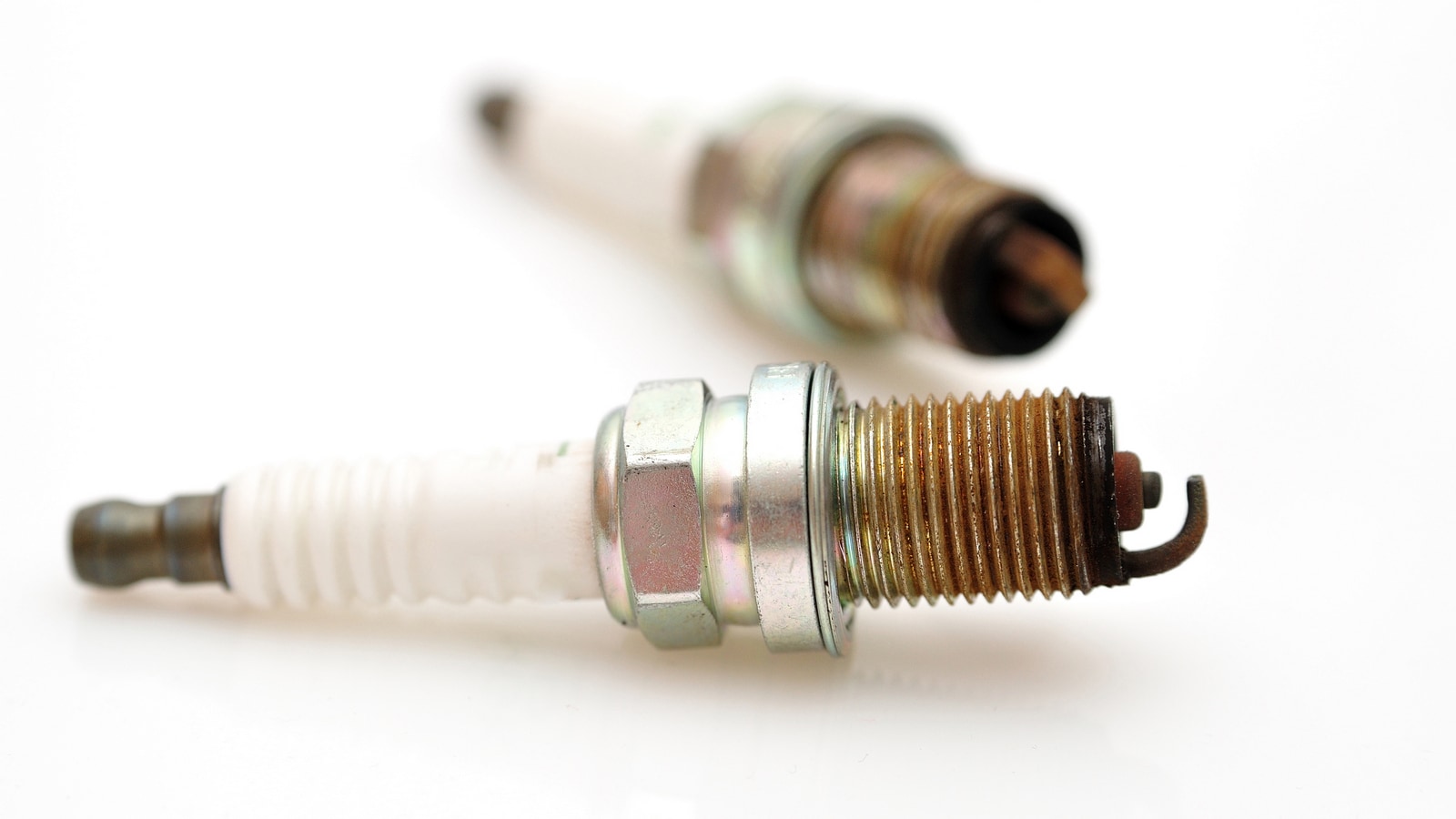Optimal Interval for Spark Plug Replacement in Cars
The optimal interval for spark plug replacement in cars is typically every 30,000 miles or every 2-3 years. As spark plugs play a crucial role in the ignition system, ensuring they are regularly replaced helps maintain optimal engine performance and fuel efficiency.
Over time, spark plugs can wear out, leading to misfires, reduced power, and decreased fuel economy. By adhering to the recommended replacement interval, car owners can prevent potential issues and keep their engines running smoothly. Regular spark plug replacement also allows for early detection of potential problems, such as worn electrodes or damaged porcelain, ensuring timely repairs and preventing more significant issues down the line.

Credit: www.kbb.com
Importance Of Spark Plug Maintenance
Ensure smooth engine performance and fuel efficiency by adhering to the recommended interval for spark plug replacement in cars. Regular maintenance at the optimal time will prevent potential issues and help extend the lifespan of your vehicle’s engine.
Enhanced Engine Performance
Maintaining proper spark plug health is crucial for achieving enhanced engine performance. Spark plugs play a significant role in the combustion process of your car’s engine. They create the spark that ignites the air-fuel mixture, allowing your engine to power the vehicle. Over time, spark plugs can accumulate carbon deposits, which hinder their ability to produce a strong spark. This can lead to misfires, reduced power output, and even engine stalling. By regularly replacing your spark plugs at the optimal interval, you can ensure optimal engine performance.
Improved Fuel Efficiency
Regular spark plug maintenance can greatly contribute to improved fuel efficiency. When spark plugs are in good condition, they efficiently ignite the air-fuel mixture, promoting complete combustion. On the other hand, worn-out spark plugs may not ignite the mixture properly, leading to incomplete combustion. This can result in wasted fuel, decreased miles per gallon, and increased emissions. By replacing spark plugs at the recommended interval, you can optimize fuel combustion and save money at the pump.

Credit: www.kbb.com
Signs Of Worn-out Spark Plugs
Keeping an eye on the condition of your car’s spark plugs is essential for maintaining optimal performance. Over time, spark plugs can become worn-out, resulting in a variety of issues that can affect your car’s performance. By knowing the signs of worn-out spark plugs, you can address the problem before it leads to more serious complications.
Rough Idling
One prominent sign that your spark plugs may need to be replaced is rough idling. When your engine is in idle mode, you may notice that it feels jumpy or uneven. This roughness can be attributed to spark plugs that are no longer firing correctly. When the spark plugs fail to ignite the air-fuel mixture consistently, it can disrupt the smooth operation of the engine. Ignoring this symptom can lead to more severe issues down the line, so it’s crucial to address it promptly.
Difficulty Starting The Car
Another indication that your spark plugs are worn-out is difficulty starting the car. If you find yourself struggling to start your vehicle or experiencing prolonged cranking before it fires up, it could be a sign that your spark plugs are no longer providing a reliable spark. Inefficient sparking can prevent proper ignition, leading to a slow or failed start. Ignoring this warning sign can result in further inconvenience and potential damage to other engine components. Therefore, it’s imperative to have your spark plugs checked and replaced as needed.
Factors Influencing Spark Plug Lifespan
Driving Habits: Regular maintenance and avoiding rapid acceleration can extend spark plug life.
Engine Type: Different engines may require spark plug replacements at varying intervals.
Determining The Optimal Replacement Interval
Manufacturer Recommendations
Manufacturers typically provide specific intervals for spark plug replacement, which can be found in the vehicle’s owner’s manual and maintenance schedule. In general, manufacturers recommend replacing spark plugs every 30,000 to 100,000 miles, depending on the type of spark plugs used. It is crucial to adhere to the manufacturer’s recommendations to ensure optimal performance and fuel efficiency.
Visual Inspection
Performing regular visual inspections is crucial for determining whether the spark plugs need replacement. Upon visual inspection, check for signs of wear, such as eroded electrodes, carbon buildup, or oil fouling. If any of these issues are present, it is recommended to replace the spark plugs.
Benefits Of Timely Spark Plug Replacement
Spark plugs play a crucial role in the functioning of a car’s engine, and regular replacement is essential to maintain optimal performance. Timely spark plug replacement offers several benefits, ensuring smooth acceleration, preventing engine damage, and improving fuel efficiency. Understanding these advantages highlights the importance of adhering to the optimal interval for spark plug replacement in cars.
Preventing Engine Damage
Regular spark plug replacement prevents potential engine damage due to worn-out or malfunctioning plugs. When spark plugs degrade, they can misfire, leading to incomplete ignition of the fuel-air mixture. This can cause damage to the engine, resulting in reduced performance and increased emissions. By replacing spark plugs at the recommended intervals, car owners can prevent costly engine repairs and ensure the longevity of their vehicle.
Ensuring Smooth Acceleration
Timely replacement of spark plugs ensures that the engine operates efficiently, leading to smooth acceleration and responsive throttle. Worn-out spark plugs can lead to stuttering, hesitation, and poor acceleration, negatively impacting the driving experience. By replacing spark plugs as recommended, drivers can maintain optimal engine performance and enjoy a smoother driving experience.

Credit: www.amazon.com
Frequently Asked Questions For Optimal Interval For Spark Plug Replacement In Cars
How Frequently Should Spark Plugs Be Replaced?
Spark plugs should be replaced every 30,000 to 100,000 miles, or as recommended by your vehicle’s manufacturer. Regular maintenance and checking for signs of wear, such as misfiring, reduced fuel efficiency, or difficulty starting, can also help determine when to replace them.
What Is The Life Expectancy Of Spark Plugs?
The life expectancy of spark plugs varies depending on several factors like the type of plug and driving conditions. Generally, they typically last between 30,000 and 100,000 miles. Regular maintenance and inspection can help determine when to replace them.
How Many Miles Do Factory Spark Plugs Last?
Factory spark plugs typically last between 30,000 to 100,000 miles before needing replacement.
What Mileage A Regular Spark Plug Must Be Replaced?
Regular spark plugs should be replaced every 30,000 to 100,000 miles, depending on the type of spark plug and driving conditions. Regular replacement ensures optimal engine performance.
Conclusion
Regular spark plug replacement is crucial for optimal car performance. By following manufacturer guidelines, maintenance costs are reduced, while engine efficiency is maximized. Keeping track of service intervals ensures smooth running and prevents potential issues. Stay proactive with spark plug replacements to keep your car running smoothly and efficiently.



